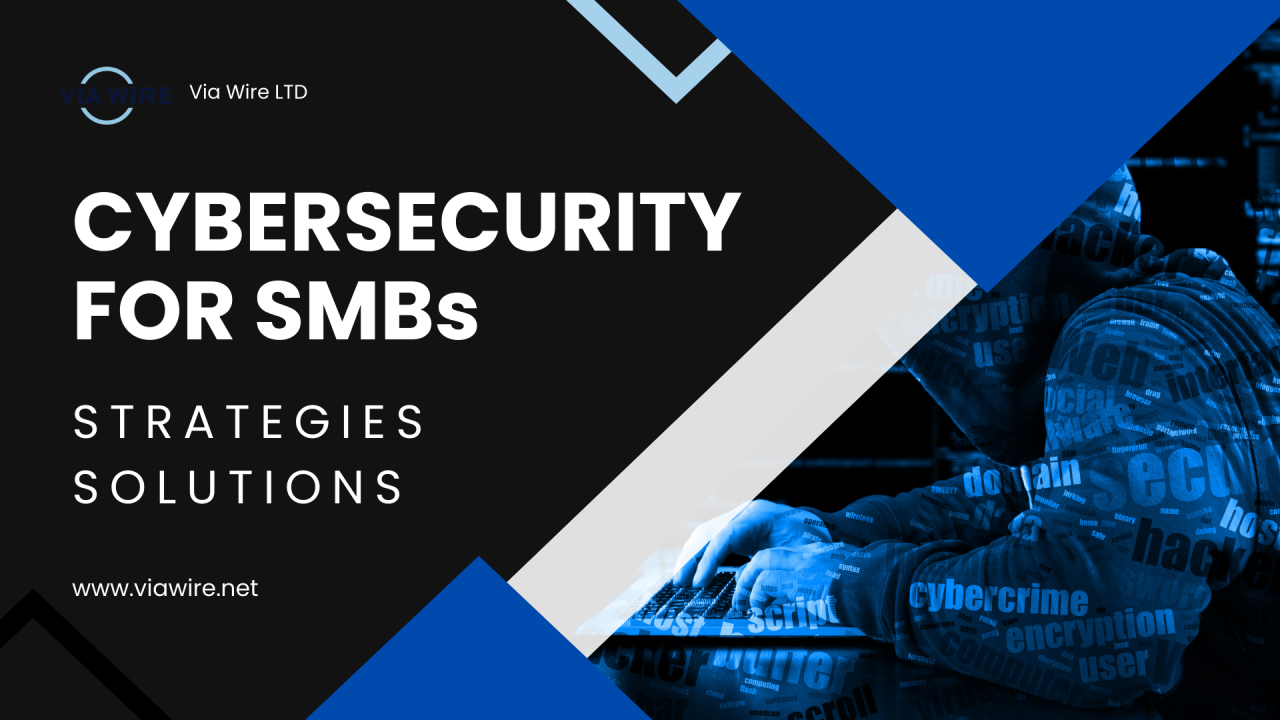Small to medium-sized businesses (SMBs) are increasingly becoming prime targets for cybercriminals.
Despite the common misconception that only large corporations are at risk, SMBs often have less sophisticated security measures, making them vulnerable to attacks.
In fact, according to the UK Government’s Cyber Security Breaches Survey, 43% of cyberattacks target small businesses, and 60% of these businesses close within six monthsof being attacked.
Understanding the importance of cybersecurity and implementing effective strategies is crucial for the survival and success of SMBs.
Why Cybersecurity is Crucial for SMBs
Financial Impact
Cyberattacks can have devastating financial consequences for SMBs. The cost of recovering from a data breach can be substantial, including expenses related to data recovery, legal fees, and lost business. Additionally, SMBs may face fines for non-compliance with data protection regulations.
Reputation Damage
A cyberattack can severely damage a business’s reputation. Customers trust businesses to protect their sensitive information, and a data breach can lead to a loss of customer trust and loyalty, resulting in decreased revenue and long-term harm to the brand.
Operational Disruption
Cyberattacks can disrupt business operations, causing downtime and preventing employees from performing their duties. This disruption can lead to missed opportunities, delayed projects, and a significant impact on productivity.
Common Cybersecurity Threats for SMBs
Phishing Attacks
Phishing involves deceptive emails or messages designed to trick recipients into revealing sensitive information such as login credentials or financial details. SMBs are often targeted due to their less rigorous email security measures.
Ransomware
Ransomware is a type of malware that encrypts a victim’s data, demanding payment for the decryption key. SMBs may lack the resources to combat ransomware, making them attractive targets for cybercriminals.
Insider Threats
Employees, whether malicious or negligent, can pose significant cybersecurity risks. Insider threats include unauthorised data access, accidental data leaks, and intentional sabotage.
Malware
Malware encompasses various types of malicious software designed to damage or infiltrate computer systems. SMBs often face malware attacks due to inadequate antivirus protection and software vulnerabilities.
Practical Strategies to Protect SMBs from Cyber Threats
Strong Password Management
Implement strong password policies that require complex, unique passwords for different accounts. Encourage the use of password managers to securely store and manage passwords.
Regular Software Updates
Ensure all software, including operating systems and applications, is regularly updated to patch security vulnerabilities. Enable automatic updates where possible to stay protected against the latest threats.
Employee Training
Conduct regular cybersecurity training sessions to educate employees about common threats such as phishing and social engineering. Teach them how to recognise suspicious emails and report potential security incidents.
Multi-Factor Authentication (MFA)
Implement MFA to add an extra layer of security to critical systems and accounts. MFA requires users to provide two or more verification factors, making it harder for attackers to gain unauthorised access.
Data Encryption
Encrypt sensitive data both at rest and in transit to protect it from unauthorised access. Use strong encryption protocols and ensure that encryption keys are stored securely.
Firewalls and Antivirus Software
Deploy robust firewalls to monitor and control incoming and outgoing network traffic. Use reputable antivirus software to detect and remove malware and other malicious threats.
Regular Backups
Regularly back up critical data to ensure that it can be restored in the event of a cyberattack. Store backups securely, both on-site and off-site, and test them periodically to ensure data integrity.
Network Security
Secure your network by changing default passwords, disabling unnecessary services, and segmenting your network to limit access to sensitive data. Use virtual private networks (VPNs) for secure remote access.
Maintaining Compliance
Understand Regulatory Requirements
Familiarise yourself with relevant data protection regulations such as the General Data Protection Regulation (GDPR) and the Data Protection Act 2018. Ensure that your cybersecurity practices comply with these regulations to avoid fines and legal issues.
Conduct Regular Security Audits
Perform regular security audits to assess your cybersecurity posture and identify areas for improvement. Use the findings to strengthen your security measures and maintain compliance with regulatory requirements.
Develop an Incident Response Plan
Create a comprehensive incident response plan to guide your actions in the event of a cyberattack. The plan should include steps for detecting, responding to, and recovering from security incidents, as well as communication protocols for notifying stakeholders.
Conclusion
Cybersecurity is not a luxury but a necessity for SMBs.
By understanding the risks and implementing robust security measures, SMBs can protect their sensitive data, maintain customer trust, and ensure their long-term success.
Investing in cybersecurity not only shields your business from potential threats but also demonstrates a commitment to protecting your customers and their information. Stay vigilant, stay informed, and make cybersecurity a top priority for your business.




0 Comments